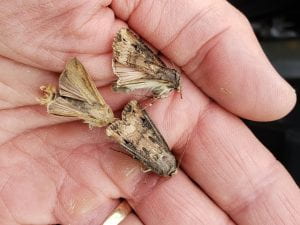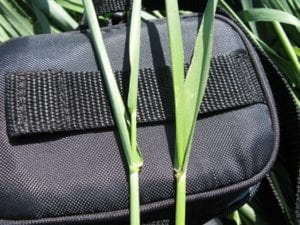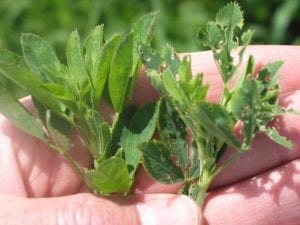Low Flights of Black Cutworm and Common Armyworm Moths

By this time last year we had several significant flights of both Common Armyworm (CAW) and Black Cutworm (BCW). It has been relatively quite so far but we caught BCW in all six traps across the region over last week. So, what is a significant number of BCW? Many universities determine a significant flight of BCW as 9 moths over a two-day period. We do not look at our traps daily, only weekly, so we cannot be as accurate. When we reach these numbers, we will start to monitor the number of degree-days accumulated (base 50°F). It takes roughly 300 degree-days for BCW larvae to be big enough to cut corn plants (4th instar). This is not a scientific process but it gives us a good idea of when we should be out there monitoring for damage. The wheat looks excellent so far! Let’s hope that CAW numbers continue to stay low.


Triticale Forage Harvest Time is Here!

Now is the time to start checking the growth stage of your winter triticale. Many fields will be ready to harvest this week, unfortunately! Triticale should be harvested at Feekes stage 9 for optimal quality. At stage 8 the flag leaf is just emerging from the top of the plant. At Feekes 9, the collar of the flag leaf is visible. We have a short video showing the optimal time for triticale harvest and how to determine Feekes stage 9 on our NWNY Team YouTube page.
Alfalfa Weevils are Feeding

Adult weevils (AW) were very active this spring. They overwinter as adults and the warm March brought them out early. We are seeing tip feeding in alfalfa so that means some of the earliest eggs have hatched. Tip feeding damage will increase until first cut harvest. We usually only have to treat first cut before harvest when we have early warm springs. The weather has been cooler but they are still feeding. Treatment threshold on first cut is if 40% of the stems have tip-feeding injury (see picture). The NWNY Team has a short YouTube video on how to scout for AW feeding injury and determine if the field is over threshold.
1st Cut Forage Quality Update
As of today May 6, 2021 alfalfa heights averaged 14 inches across all locations. The table below indicates grasses are ready to be cut today. The continued temperature fluctuations along with rain will influence how much growth we get in another week so stay tuned! Some fields may not be accessible when the forage is at target quality. Remember to focus your efforts on those fields you can capture quality from and leave the (over) mature fields for non-lactating animals.
Height indicators alfalfa and grass for NDF content are below:
- In general we say 100% grass stands should be cut when nearby alfalfa is 14 inches tall to achieve the desired 50% NDF.
- Begin cutting 50/50 mixed alfalfa and grass stands when nearby alfalfa is 22 inches tall for the desired 44% NDF.
- Begin cutting 100% alfalfa stands when alfalfa is 28 inches tall for desired 40% NDF.



